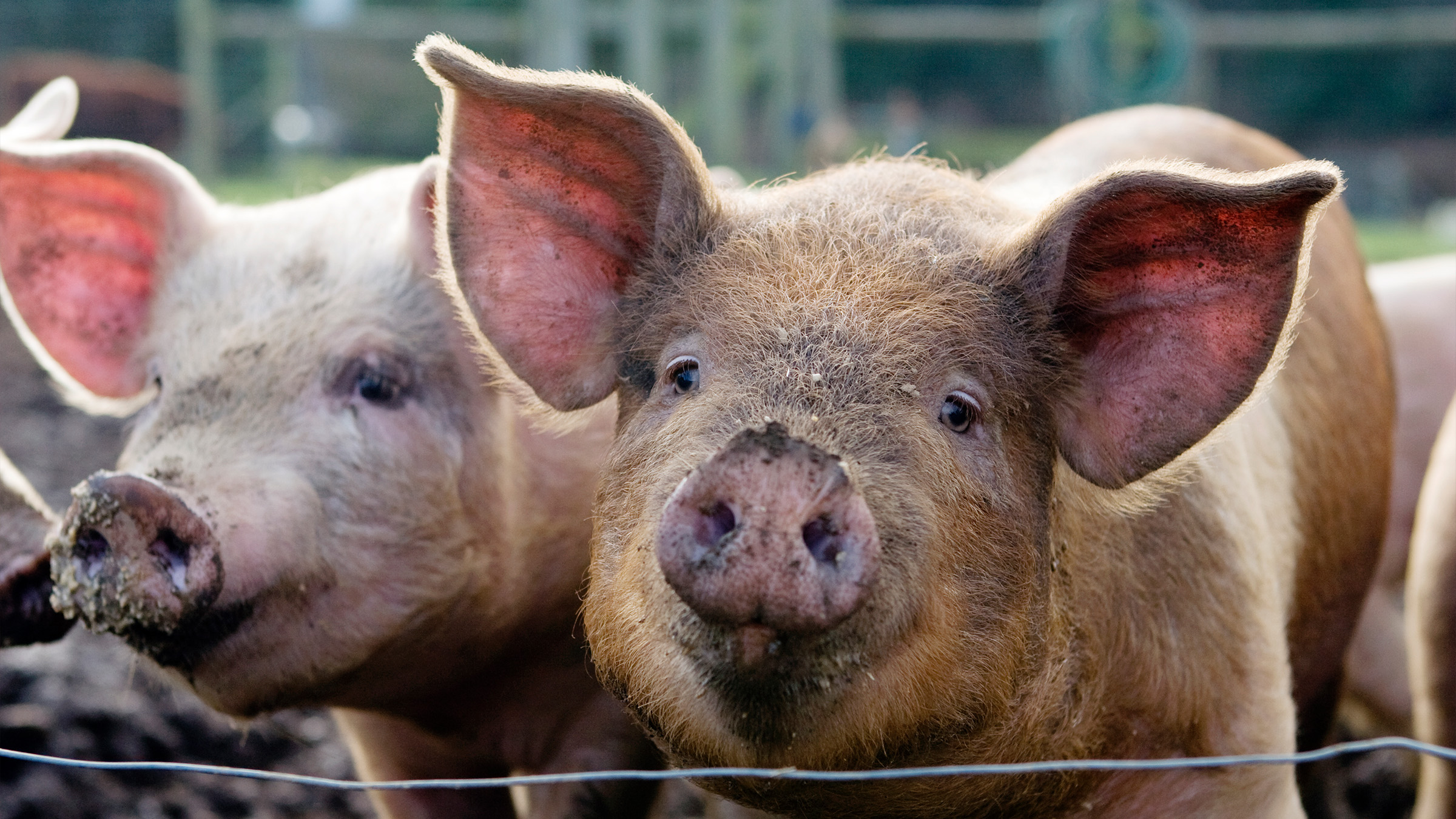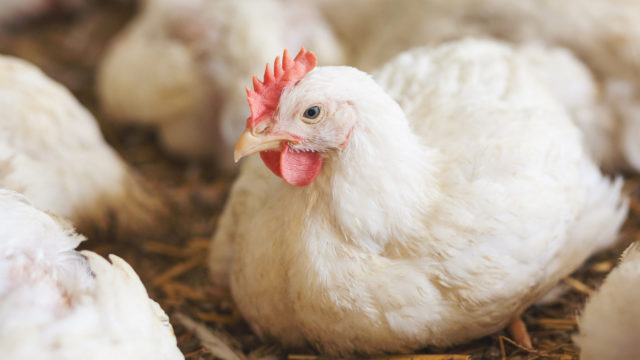
Mexico Adds Animal Protection to its Constitution
By Nicole Pallotta, PhD, Senior Policy Program Manager
Contents
“The Mexican State Must Guarantee the Protection of Animals”
Among the constitutional reforms is Article 4, which states: “Mistreatment of animals is prohibited. The Mexican State must guarantee the protection, proper treatment, conservation, and care of animals, as specified by the respective laws.”
In addition, Article 73 empowers the federal government to enact laws pertaining to animal protection—previously managed solely by state and local governments—and mandates the creation of a national animal protection law within 180 days. In crafting this legislation, Mexican lawmakers must consider:
[Animals’] nature, characteristics, and relationships with people, the prohibition of mistreatment in the breeding, use, and slaughter of animals for human consumption, and the use of wildlife specimens in profit-making shows, as well as the necessary measures to address pest control and health risks.
Activists worked to ensure all species, including farmed animals, were included in this provision, which sets up a framework for future protections.1
Finally, Article 3, which pertains to Mexico’s education system, broadly mandates that animal welfare be included in the curricula for grade school and high school students (among many other subjects), but does not provide further details.
Calling them “a milestone achievement for Mexico’s animal rights movement,” Vox notes that the reforms are the result of a years of campaigning by animal advocacy organizations, including Igualdad Animal Mexico, Humane World for Animals Mexico, and Movimiento Consciencia.
While it remains to be seen what concrete legislative and policy changes will emerge from these constitutional amendments—and what details will be included in the yet-to-be-drafted national animal protection law—advocates are optimistic they will lead to positive improvements for animals across Mexico.

Animals in Constitutions
Several countries reference animals directly or indirectly in their constitutions.2 These provisions typically focus on environmental sustainability rather than treatment of animals, conceptualizing them as living resources or parts of ecosystems rather than individual beings with their own interests.
However, a smaller but growing number of national constitutions include what Eisen and Stilt (2016) have differentiated as “animal protection provisions,” which explicitly mention protection, welfare, dignity, compassion, or cruelty pertaining to animals.3 Mexico joins Switzerland (1973), India (1976), Brazil (1988), Slovenia (1991), Germany (2002), Luxembourg (2007), Austria (2013), Egypt (2014), and Italy (2022) in elevating animal protection to a matter of constitutional concern.4
Additionally, among this smaller group of ten countries, Mexico’s reforms appear to be unique due to their greater detail. As animal law scholar Kristen Stilt told Vox: “Mexico is different. It’s longer, it’s more specific. It’s in several provisions. It’s not just a general statement.”
What’s Next?
Constitutional references to animal protection are a positive step in that they signal state recognition of other-than-human interests and help build a foundation for future advancements. However, they do not ipso facto equate to concrete improvements for animals, particularly when it comes to the countless number of individual animals exploited for human use. As with all legal reforms, the potential for change depends both upon the wording of the provisions, and what happens after.
As just one example, “animal dignity” has been part of the Swiss Constitution for more than 30 years,5 and was added to Switzerland’s national Animal Welfare Act in 2008. While unique in the world and considered a landmark development in animal law, abstract concepts like dignity can prove difficult to concretize into laws and policies that meaningfully challenge the status quo regarding animal treatment.
As Bolliger (2016) has noted:
Despite this far-reaching conceptual reorganization of Swiss animal law, no essential change in the human-animal relationship has been observed in practice. To the contrary, in many areas animals still are exploited in ways that are hardly consistent with respect for their dignity. In order to provide true legal protection for animals’ dignity, numerous forms of everyday animal use must be fundamentally questioned. (p. 314)
Thus, although animal dignity has been enshrined at both the constitutional level and as a guiding principle in its national animal protection law—potentially sweeping reforms—the animal-industrial complex in Switzerland has remained basically unchanged.

Relative Value and Human Exceptionalism
When exploitation of animals for human use is culturally normalized, legal concepts like dignity (or rights or protection) tend to be interpreted through a lens of human exceptionalism, whereby animal interests are superficially acknowledged but remain at the margins of moral concern. In this anthropocentric context, the challenge is to ensure that hard-fought legal reforms lead to material changes for animals.
As Bolliger further observed:
However, by now, such changes are regrettably only rudimentary. In Switzerland, many animals are still instrumentalized in a way that is incompatible with respect for their dignity. The Swiss legislature has decided to grant only a relative value to animal dignity in favor of a dignity conception that allows for the assessment of interests. Thus, although the dignity of living beings (including animal dignity) must always be considered, it is not absolutely protected. (p. 388)
The problem of relative value recurs time and again in animal rights law. Even when groundbreaking decisions or landmark laws contain laudable language about animal rights, they are usually tempered with caveats that make it clear that human interests take precedence, thus resulting in incremental improvements in animal welfare (at best) without necessarily challenging underlying systems of exploitation.
Of relative value in the Swiss case, Shaw, Rodriguez Perez, and Perrson (2024) critically noted: “This is a new and different type of dignity. The whole point of dignity as a concept is that it cannot be relative—dignity is either respected or it is not” (p. 4).
Despite its shortcomings thus far in producing concrete improvements for animals, Bolliger concluded that the Swiss provision could, and should, at a minimum nudge the government toward incremental changes.
The constitutional requirement to take animal dignity into consideration includes at the very least a programmatic obligation on the part of the government to focus on finding alternatives regarding exclusive instrumentalization of animals whenever possible and to promote and subsidize these alternatives. (p. 389)
Writing eight years later, Shaw, Rodriguez Perez, and Perrson concluded more pessimistically that the Swiss concept of animal dignity is fundamentally flawed.6 While they argue that the concept of human dignity is also flawed, at least it “serves as a theoretical foundation for fundamental human rights.” In contrast, the concept of animal dignity, worse than being ineffective, “not only sets back the cause of protecting animals from exploitation by humans, but actively facilitates it” (p. 8)
Barring changing the terminology to something besides dignity (the authors suggest “integrity” as a possibility):
The only alternative is for Swiss law to actually treat animals in Switzerland with absolute dignity, in accordance with the country’s Constitution. Of course, doing that would involve significant societal change at a level that many humans may be unwilling to accept. (p. 8)
Aspirational Visions and Long-Term Change
It is reasonable to conclude that while they have been gaining momentum, provisions that recognize animal protection as a constitutional principle are currently more aspirational than practical in terms of effecting material changes in the lives of animals—who it must be remembered comprise a vast category of diverse species who do not share the same needs and are subject to different types of exploitation or other human-caused harms. Thus reforms for free-living wild animals will likely look different from those for captive wild animals, which will be different from reforms for farmed animals, which may be different than those affecting companion animals, and so on. However, these provisions lay important groundwork to enable future advances and thus are not purely symbolic.
Of the positive significance of constitutional provisions regarding animals, Le Bot (2024) wrote:
A constitutional norm is characterised by its stability, durability and continuity over time. It also has a superior legal status, which enables it to prevail over subordinate norms. These two elements together render inclusion in a constitution a decisive issue: succeeding in enshrining a certain vision of the world (or of animals) in a constitution ensures that it will prevail in the long term. This has been clearly understood by animal rights advocates, as well as their opponents. It explains the initiatives taken by both sides to invest the constitution. In the field of animal law, the presence of animals in the constitution is one of the most important issues of the 21st century. (n.p.)
Gerritsen (2013) has likewise noted the importance of including animals in constitutions:
A constitution always reflects the overall values of a society. The inclusion of animal welfare measures does not indicate a revolution in human-animal relations; rather it is an official and clear acknowledgement at the highest level of law that people cannot deal with animals at will and without limitations. (p. 14)
Access to Justice
Along with these positive aspects is a perennial issue plaguing laws that protect animals, from local ordinances to constitutional provisions: underenforcement.7 Referencing an “enforcer-beneficiary gap,” which raises problems of representation in the constitutional context, Eisen (2016) noted “in some jurisdictions, standing laws dramatically restrict the extent to which these provisions may be deployed in support of animal interests through litigation” (p. 937-8).
However, some constitutional courts have recognized that cognizable claims for animals may be made, whether under an explicit animal protection provision or one that implicitly protects animals, such as rights of nature provisions. For example, the Ecuador Constitutional Court in 2022 ruled that wild animals are protected under the Ecuadorian Constitution and—crucially—that they can enforce those rights in court. That case involved a monkey named Estrellita who was taken from the wild as an infant and kept unlawfully in a private home for 18 years. The court—which selected Estrellita’s case for review specifically to develop “binding jurisprudence” around the scope of the rights of nature—found that wild animals have legal rights and that they are protected under the scope of the rights of nature. In its ruling, the court emphasized the importance of enforcement mechanisms, noting that legal rights must include both a substantive and procedural dimension because without the latter, rights will be “unenforceable, useless or non-justiciable.”
The Estrellita decision also suggests that rights of nature provisions can overlap with or at least complement animal protection provisions at the constitutional level. Although wild animals are protected as part of nature, the Constitutional Court of Ecuador cautioned the law must also be animal-centric, writing: “This Court warns that animals should not be protected only from an ecosystemic perspective or with a view to the needs of human beings, but mainly from a perspective that focuses on their individuality and intrinsic value.”
The Colombian Constitutional Court has echoed this message. In Sentencia C-666 de 2010, the Constitutional Court wrote: “[T]he elements that make up the concept of the environment may be protected per se, not simply because they may be useful or necessary for human life.” In Sentencia C-041 de 2017, the Court went further, taking upon itself the “commendable duty to ensure,” as “the authorized interpreter of the Constitution,” and “in the pursuit of the essential and societal ends of the constitutional State, that the Law includes animals as the subjects of certain rights,” including—potentially—“unenumerated” constitutional rights. In Sentencia SU-016 de 2020, the Constitutional Court encouraged practitioners to use “already-existing statutory instruments to guarantee” these rights. Colombian practitioners have used these rulings, and others, to successfully represent the interests of animals in court.
Access to justice is essential in order for existing laws, including constitutional provisions, to effect material change in the lives of animals, as they were intended to do. Substantive rights (laws that recognize animals’ interests) and procedural rights (e.g., standing provisions for advocates or animals themselves) must advance together to achieve justice for animals.

Conclusion
While Mexico’s new constitution provisions—and many animal protection laws—prohibit mistreatment of animals, what constitutes “mistreatment” is subject to interpretation and is heavily influenced by powerful corporate interests. It is also subject to change for the better as societal attitudes about animal exploitation evolve.
Legal reforms, including those at the constitutional level, generally do not advance far ahead of public sentiment. However, it is important to have an aspirational vision. In tandem with changing social norms regarding acceptable treatment of animals, these provisions can provide space for improvements in the future but should be considered a first step in what will likely be a long process toward meaningful change. Advocates will continue to play a key role in pushing these changes forward.
Any opinions contained in this article are the personal views of the author. They are not necessarily representative of the opinions or views of the Animal Legal Defense Fund or any clients. This information is presented for informational purposes and does not constitute legal advice.
Further Reading
- Robinson, Nathan J. “How Mexican Activists Scored a Major Victory for Animal Rights.” Current Affairs. Jan. 2, 2025.
- Delgado, Same. 2024. “Mexico just put animal welfare into its national constitution.” Vox. Dec. 7, 2024.
- Shaw, David, Christian Rodriguez Perez, and Kirsten Persson. 2024. “Slaying the Swiss Unicorn of Animal Dignity.” Animals 14:507.
- Le Bot, Olivier. “Constitutional Animal Law: Trends and Impacts.” IACL-AIDC Blog (27 February 2024).
- Bolliger, Gieri. 2016. “Legal Protection of Animal Dignity in Switzerland: Status Quo and Future Perspectives.” Animal Law Review 22.
- Gerritsen, Vanessa. 2013. “Animal Welfare in Switzerland – constitutional aim, social commitment, and a major challenge.” Global Journal of Animal Law 1.
- Eisen, Jessica. 2017. “Animals in the constitutional state.” International Journal of Constitutional Law 15:909–954.
References
- See: “How Mexican Activists Scored a Major Victory for Animal Rights.” Current Affairs. January 2, 2025.
- These provisions typically refer to preservation or conservation of fauna, wildlife, living beings, native species, living resources, nature, or biodiversity, for example. See: https://worldanimal.net/our-programs/constitution-project-resources/constitutions-chart
- See: https://animal.law.harvard.edu/what-we-do/projects/constitutional-law/; https://pleasantblog.co.uk/2022/02/21/animals-in-constitutions-1/
- See: Eisen, Jessica. 2017. “Animals in the constitutional state.” International Journal of Constitutional Law 15: 909-954.
- Switzerland added animal welfare to its constitution in 1973 and in 1992 added a second provision regarding animal dignity, which was then incorporated as a guiding principle in the Swiss Animal Welfare Act of 2008. (See: Bolliger, Gieri. 2016. “Legal Protection of Animal Dignity in Switzerland: Status Quo and Future Perspectives.” Animal Law Review 22:311.)
- For a more optimistic view of the concept of animal dignity, see: Bernet Kempers, E. “Animal Dignity and the Law: Potential, Problems and Possible Implications.” Liverpool Law Rev 41, 173–199 (2020). https://doi.org/10.1007/s10991-020-09244-1
- The Animal Legal Defense Fund provides free legal assistance to prosecutors, law enforcement, and veterinarians handling animal cruelty cases: https://aldf.org/article/online-resources-for-prosecutors-and-law-enforcement/
Sign Up!
Join the Animal Legal Defense Fund's email list to stay up to date on lawsuits, legislation, and regulations affecting animals.
Focus Area
How We Work
Related
-
Animal Bill of Rights
Animal cruelty is defined differently in every state’s laws, but generally includes both abuse and neglect. Unfortunately in each state, the law treats animals as property instead of living, sentient beings. That’s why the Animal Legal Defense Fund stands for -
Settlement Reached in California Water Use Lawsuit against Foster Poultry Farms
Foster Poultry Farms agrees to improve water conservation and animal welfare at its Livingston, California poultry-processing plantApril 21, 2025 Press Release -
Lawsuit Against Tillamook for Deceptive Advertising Allowed to Proceed
The Animal Legal Defense Fund will continue to challenge the dairy company for misrepresenting the source of its milk to consumersApril 4, 2025 Press Release




